Are you a football/soccer player looking to return to play after having a baby?
Historically, this might have meant the end of your football career, but new research is challenging these long held beliefs. Please read this important post with a review of the article outlining the information that was learned from this study.

Reviewing RESEARCH ARTICLE – Title: Kicking Off Motherhood: Considering Return to Play Postpartum in the Footballer
Type: Narrative review
Publication Date: 25 August 2025 SpringerLink Life Science Network
Kicking Off Motherhood: A Physiotherapist’s Guide to Postpartum Return-to-Football
Overview
This narrative review challenges the outdated belief that pregnancy and childbirth ends a footballer’s career. It brings together current research on postpartum physiological, musculoskeletal, and psychological changes—and applies them specifically to footballers seeking to return to play (RTP) as professionals or at community levels. Reference
Core Themes
1. Postpartum: More than the “6‑Week Check”
- The postpartum period—often called the “fourth trimester”—extends well beyond the typical 6‑week mark, with lingering adaptation across systems including sleep, hormones, mood, and physical recovery. Reference
- Return timelines must be flexible: healing from cesarean sections, perineal trauma, and other birth-related factors significantly affect recovery strategy. Reference
2. Physiological Adaptations & Potential Performance Gains
- Cardiovascular and respiratory changes may persist up to a year postpartum, potentially enhancing aerobic capacity (e.g., increased VO₂ max).
- Hormonal shifts (e.g., declining estrogen) affect mood, neuromuscular control, and thermoregulation; while lactation raises energy demands and influences bone metabolism. Reference
- Bone mineral density (BMD) can drop during pregnancy and lactation. Recovery may be incomplete even months postpartum, underscoring the need for targeted nutrition and impact-loading exercises. Reference
3. Musculoskeletal and Pelvic Health
- Gait, joint loading, and neuromuscular control can remain altered postpartum—posing risks in acceleration, pivoting, and change-of-direction movements central to football. Reference
- Common complications include pelvic floor dysfunction, urinary incontinence, diastasis recti, prolapse, scar issues, lumbopelvic pain, anemia, sleep disruptions, and mental health challenges. Reference
4. Guidelines & RTP Frameworks
- The 2025 Canadian Guideline moves beyond mandatory medical clearance, recommending gradual progression to ~120 minutes of MVPA over multiple days, without increasing injury risk or compromising breastfeeding. Reference
- Footballers’ RTP should follow a phased, criteria-based structure: from “Ready” → ”Review” → ”Restore” → ”Recondition” → ”Return” → ”Refine” (the “6 Rs”), tailored to each athlete’s context. Reference
- Objective markers, biopsychosocial assessment, and shared decision-making (including medical, performance, and coaching teams) are essential—rather than relying on fixed timelines. Reference
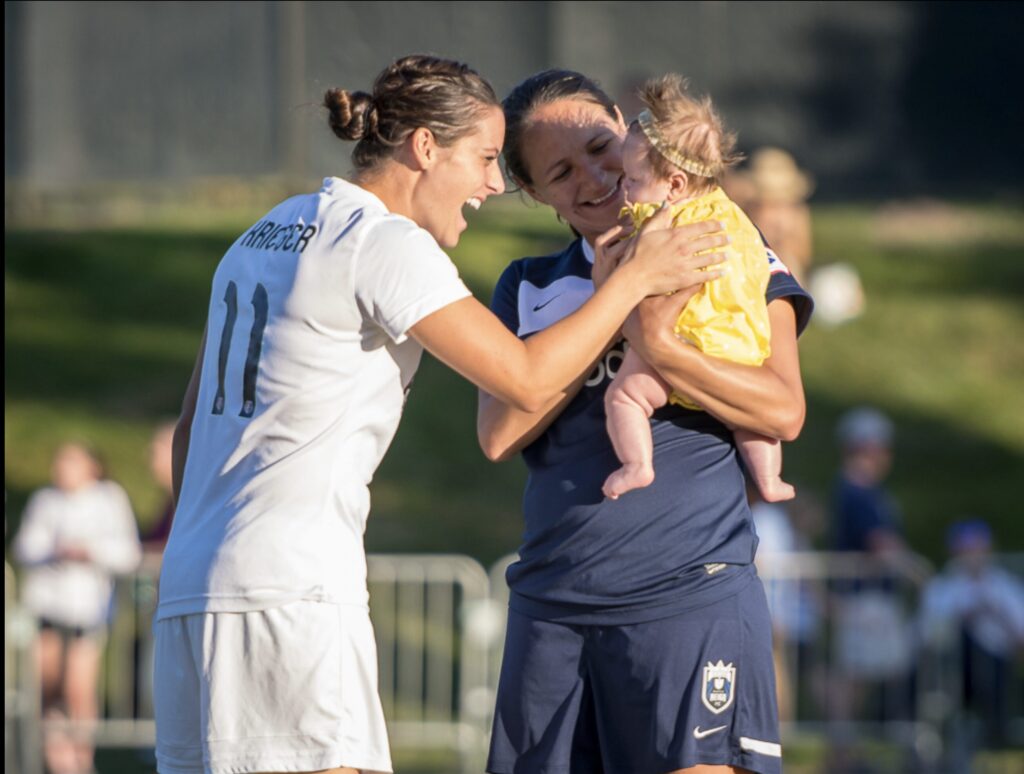
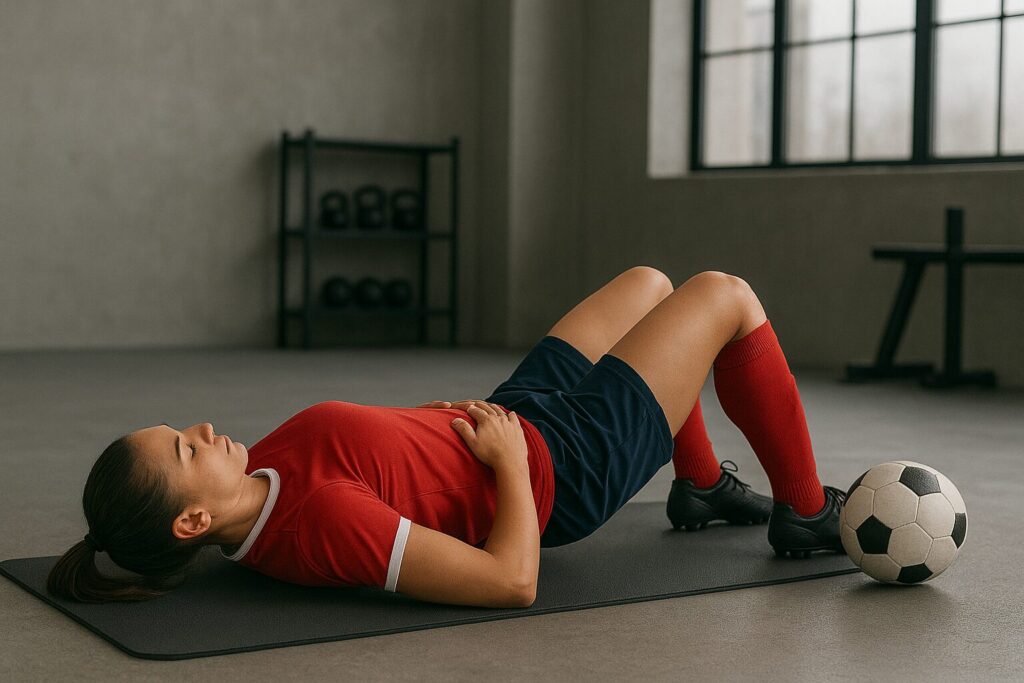
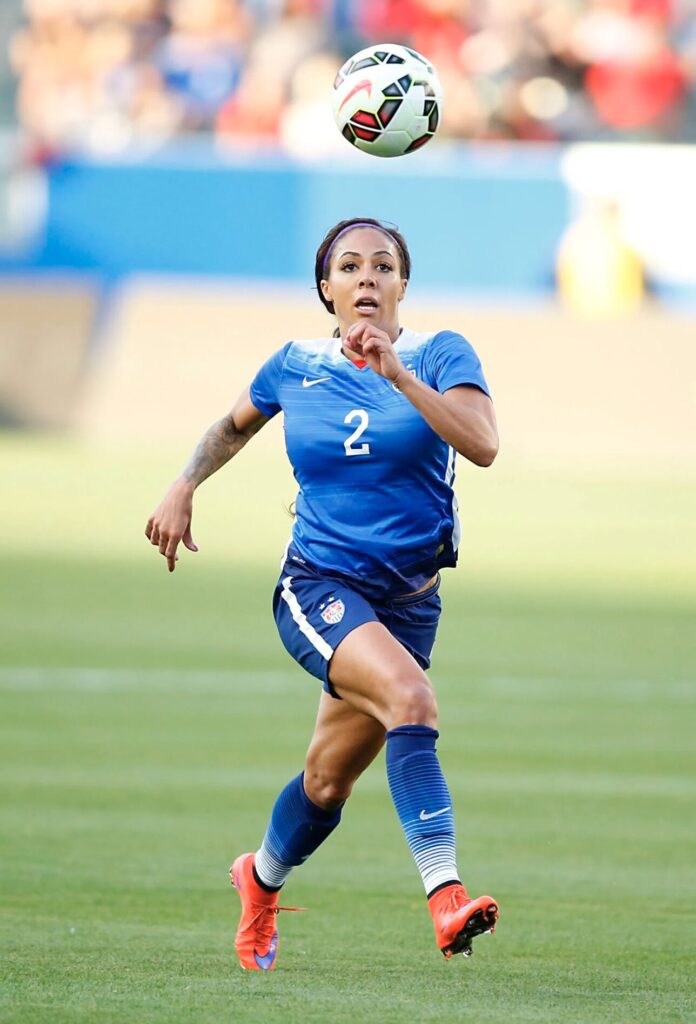
5. Role of Multidisciplinary Support
- A successful RTP depends on integrated care involving pelvic health physiotherapists, nutritionists, lactation consultants, sports psychologists, and performance teams. SpringerLink
- Addressing logistical and psychosocial needs—like childcare, flexible scheduling, emotional support, and financial stability—is critical to sustainable return. SpringerLink
How does Physiotherapy Play a role in Return to Play (RTP) for Women’s Footballers?
Enhanced RTP Framework for Physiotherapists
As physiotherapists, here’s how we can translate the review into our holistic physiotherapy practice.
1. Anchor to the 2025 Canadian Postpartum Guideline
- Recommend 120-150 minutes of moderate-to-vigorous physical activity (MVPA) per week, spread over at least four days, blending aerobic and resistance training—plus daily pelvic floor muscle training supervised by a physiotherapist. csepguidelines.ca
- Use the Get Active Questionnaire for Postpartum to safely screen individuals before starting MVPA. csepguidelines.ca
- Emphasize flexibility and progression—small steps matter, and social support is essential. csepguidelines.ca
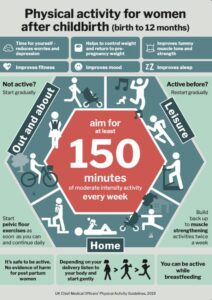
2. Leverage Phase-Based Protocols for RTP Progression
- Current Sports Medicine Reports outlines a detailed pelvic-floor–centered progression from recovery to advanced functional training. Lippincott
- International Journal of Sports Physical Therapy offers a week-by-week timeline:
- Weeks 0–6: Gentle mobility, pelvic floor endurance, light walking
- Weeks 7–12: Introduction of strength, endurance, and low-impact activities
- Weeks 13+: Gradual return to sport-specific training including running and dynamic drills IJSPT
- Physio-Pedia adds practical benchmarks before running return—like single-leg balance and hop tolerance—and highlights red flags (e.g., pelvic heaviness, incontinence) to watch for. Physiopedia
3. Embrace Multidisciplinary, Contextualized Care
- JOSPT advocates the “3-phase” model (Recovery | Rehabilitation/Training | Competition), grounded in individualized planning that includes women’s health physiotherapists, medical providers, and potentially mental health support. JOSPT
- FIFPRO’s Return-to-Play Guide offers an athlete-centered model tailored for football, complete with education and stakeholder support frameworks. FIFPRO
Adapted Summary Table for Physiotherapists
| Focus Area | Application in Practice |
|---|---|
| Initial Assessment | Screen using the Get Active Questionnaire; assess pelvic floor function, abdominal control, delivery-related factors. |
| Phase-Based RTP Plan | Start with early recovery (Weeks 0–6), transition through strength and low-impact training (7–12 weeks), advance to sport-specific work (13+ weeks). |
| Pelvic Health Focus | Daily PFMT, integrate breath control, deep core engagement, and functional tasks. |
| Strength & Function | Progress from mobility and endurance to full closed-chain, single-leg, and impact-absorbing actions. |
| Monitoring & Safety | Use movement assessments (e.g., hop tests, balance tasks) and watch for symptoms such as leakage, heaviness, or pain. |
| Holistic Support | Collaborate with OB-GYN, nutritionists, mental health pros; consider sleep, fatigue, and contextual stressors. |
| Tailored RTP for Football | Incorporate agility, sprint, cutting drills only after pelvic and core readiness; lean on FIFPRO’s framework for football-specific return. |
Final Thoughts
This narrative review signals a powerful shift toward athlete-centered postpartum care in football, emphasizing that the return to play (RTP) is multifaceted—shaped by evolving physiology, strategic progression, and deep psychosocial support.
For physiotherapists, this translates into an opportunity to deliver evidence-informed, empathetic, and individualized care, recognizing both the physical intensity of football and the unique postpartum journey of each athlete. This approach not only aids performance but also fosters retention of talented players and encourages the next generation of athlete‑mothers. Physiotherapists will play an important role in helping footballers to safely return to sport for the short and long term.
If you are interested in returning to playing football safely, and need some help knowing how to do this, please Contact us to see how we can help you! Or book a consult online and we can provide a personalized assessment of your individual needs. Our team of dedicated and experienced Physiotherapists is here to help you.
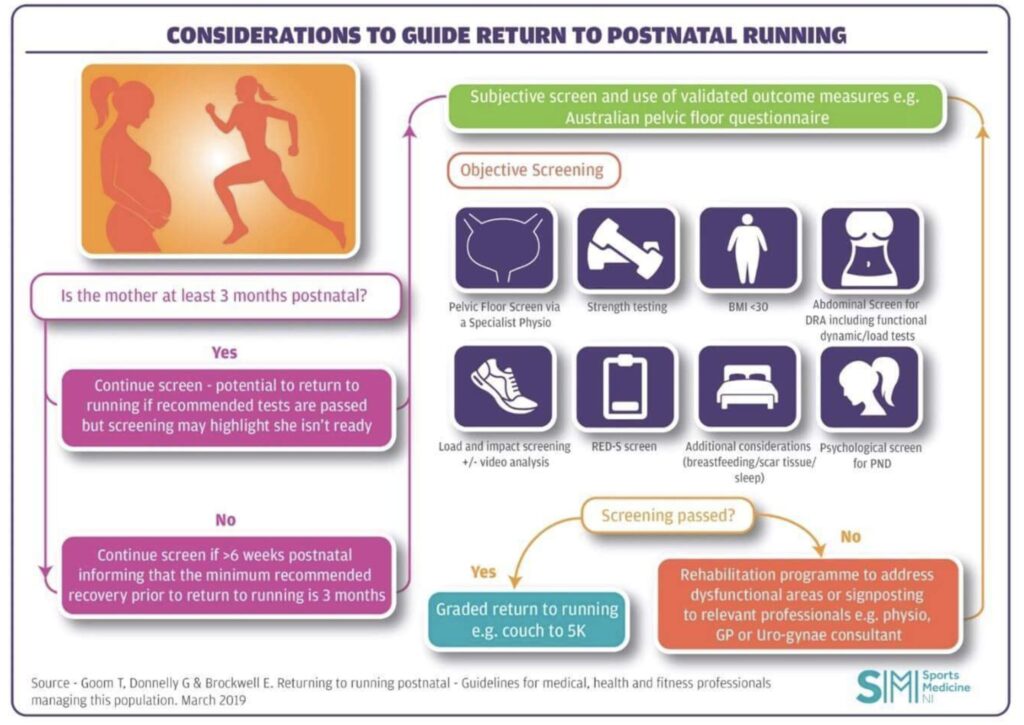
You can also click to link to our clinic handout to help guide your safe return to play! Click here for access to the PDF.
